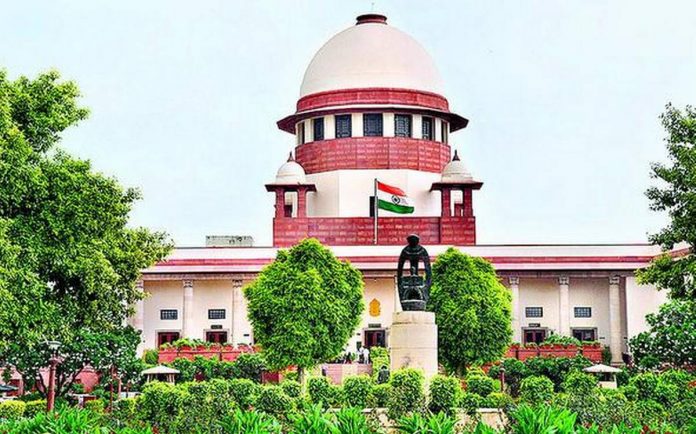This article is written by Bheeni Goyal from Symbiosis Law School, Pune which discusses the evolution of the Judicial System in Ancient India and the role of the system concerning Criminal Law.
Table of Contents
Introduction
Unlike modern times, ancient times did not have the Constitution and Codes to direct them what to do and what not to do. Their lives were governed only by ancient texts such as Manusmriti, Brahaspati Smriti, etc. All the civil and criminal cases in the earlier times were governed by the sections of these sacred texts. It is considered that many countries follow the age-old system of Judiciary as established in India that is based on the principles that existed in the older times. However, the earlier Judicial system cannot be said as criminal friendly as the system exists now. Many criminals and even non-criminals (those who did not follow the line of Dharma) were subjected to hardened punishments. Therefore the author in this article has tried to analyze the evolution of the Judicial system from the ancient era and the punishments inflicted on the criminals in the earlier times.
Evolution of the Judicial System in Ancient India
The Judicial system in India is one of the oldest systems among the various countries. Our Judicial system has derived its basis from all the ancient texts that are believed to be written by God itself. The major among them are the Manu and Brihaspati which further gave us the Smritis, Dharma Shastra, and Kautilya which is also referred to as the Arthshastra. Dharma was considered the most important one as all the kings and rulers in ancient times used to be dependent on the facet of Dharma. All the activities and work are done by the individuals in daily life whether professional and personal, were based on Dharma. The most important mythology texts in our culture are the Ramayana and Mahabharata which used to be dependent upon the sole facet of Dharma for regulating the life of the individuals at that time. All the criminals were punished based on whether they have followed the Dharma or not.
After reading all the above-mentioned texts, it could be considered that in ancient India we had a fairly well-developed system of the administration of justice. Keeping aside the atrocities that used to be faced earlier by the individuals, the criminals used to get the punishments according to the sins which have been done by them. The punishments were given to create a deterrent effect so that individuals cannot consider committing these mistakes in their future.
If we consider the principles of the Manusmriti, we can find that the definition of a perfect system to govern the lives of individuals should be based on the 10 essential Principles. These Principles are honesty, sanctity, Patience, piety or self-control, Patience, forgiveness, reason, knowledge or learning, control of senses, truthfulness, and absence of anger.
Hierarchy of Judicial System
The hierarchy of the judicial system as existed today has been derived from the hierarchy which used to exist in ancient times as well. Many kings used to make the decision themselves, however, there were many courts of the king where they used to hire the ministers for providing Justice to the public in general as they used to be busy in the more important matters. The same thing exists now as well. For any criminal or civil issues, the trial courts or the lower courts are approached first and then the public has the right to move to the Higher Courts if they are not satisfied with the judgment of the lower courts. In ancient times as well the King has been subject to the law himself and if there was a breach of duty on the part of the King then in such a case it would result in the forfeiture of kingship. Such circumstances do exist in the current scenario as well, where all the decision-makers and the judges are subjected to law and no one is above the law.
Structure of judiciary for criminal complaints in ancient times
In villages, the local village councils or Kulani, (as referred to in ancient times) are basically like the modern-day panchayat, it consists of a board that further comprises five or more members to bestow justice to all the villagers. It was held responsible for all matters which were related to the legacies, irrigation, cultivable land, and punishment of crime, etc. Coming to the village councils, it was concerned with normal civil and criminal cases. At the upper level in towns and districts, the Courts were generally supervised over by the government officers who used to work under the authority of the King to administer justice. There used to be a link between the village assembly in the local area and the official administration. He was referred to as the headman of the village. In each village, the local head man was holding a hereditary office and was required to maintain order and administer justice. He was also a member of the village council; he acted both as the leader of the village and mediator with the government.
Taking into consideration Brihaspati Smriti in ancient India, the hierarchy of courts used to begin with the Family Courts and the last stage in the hierarchy used to be the King. The lowest in this was the recognized family arbitrator for solving the minor disputes between the families concerning quarrels between husband and wife or property-related issues etc. The next stage in the hierarchy of the Court was that of a judge; the next of the Chief Justice who was called Adhyaksha; and at the top stage there was the King’s Court who used to be involved in the large matters such as the crime committed against society or murder or felony. Therefore in the earlier times, the jurisdiction of the court used to be determined based on the importance of the dispute. All the minor disputes were decided by the lowest Court and most of the cases which were important and have a larger impact on society were decided by the king. The decision of each higher Court was superseded from that of the lower Courts.
Role of judiciary in the criminal law system in the ancient times
The main purpose of the creation of the proper code for Criminal Law is to punish the accused of the crimes which have been committed by them. However, such a code did not exist in ancient times and the quantum of punishments given to the criminals was recognized based on the ancient texts or the laws which had been created by the subjects of the king during his reign. The code which exists today will apply to the coming generations as well (including the amendments). However, in ancient times, the laws governing the life of individuals used to depend upon the ideology of the king.
The importance of punishment both in the ancient as well as current times cannot be denied. This concept is significant for the maintenance of law and order in society. The theory which existed in ancient times as well as in modern times provides that the punishments refrain the offender from any kind of wrongdoing because of the fear of it and therefore it can be said that the law and punishments cannot be separated from each other. Talking about ancient times, it is said that the concept of punishment has emerged from Dharmastra. According to the Hindu Shastras, the king of the state had the full right to convict and punish the lawbreaker and at the same time protect the law-abiding citizens. One of the famous quotes stated in Manu (translated in English) provides that “ the punishment remains awake when the people are asleep, so the wise have recognized punishment itself as a form of Dharma”.
The perspective of the crime and the punishment of the crime has changed over the period. There has been the development of different forms of punishment and it has changed over time. In the past, we have seen that the death punishments were used to be given in the rarest of the rare case but now the methods for the execution and the conviction have changed over time, and now the methods of the execution have also changed which supports the human rights. In ancient times, for every crime against the king or state, the individuals were provided with the death sentence for every small cause.
However, in the current scenario, it used to be awarded in the rarest of cases. Still, in some societies, the ancient forms of cruel punishment are used but the punishment has also evolved along with civilization and has become less cruel. Now, the severity of punishment depends on the crime and a person is punished with severe forms of punishment only if he commits serious crimes. There has been a lot of change in the way in which the punishments were served on the criminals. The perspective of the Judiciary has changed since ancient times in regards to the severity of the punishments given to the criminals. Let’s see some of the punishments which were provided in ancient times by the Judicial Authorities. The two famous forms of punishment that were given in earlier times by the Judiciary were Capital Punishment and Corporeal Punishment.
Capital Punishment
Capital Punishment means the legal authorization to kill someone for the punishment of the crime. It is referred to as the death penalty. In ancient times, even at the time of the British Rule, the individuals were punished with capital Punishment for every crime which was committed by them, whether small or big. In ancient India, it was considered that if any individual is not following Dharma or violating the principles of Dharma, doesn’t have the right to live in the society and the best way to punish them is to take away their lives.
For example in ancient times, it was considered that it is Dharma of a wife to take care of her husband and she should be devoted towards him for her whole life and when she did not follow this principle, she was either beaten to death by her husband or the society punishes her with severe punishments which are worse than death. She was not considered less than a criminal In modern India if the wives are involved in adultery under Section 498A of IPC, (which is no longer illegal), is given a chance of proper hearing before the court of law and we have strict punishment for the Domestic Violence under the Domestic Violence Act, 2005.
Forms of Capital Punishment for criminals in ancient times
Some of the forms of punishment that were provided in ancient times by the judicial officers are stoning, pillory, construction in the wall, etc. Under stoning, a group of people either by themselves or on the order of the officers used to throw stones at the criminals until they used to die. In the case of the pillory, the accused was forced to stand in a public place and his head and both hands were tied in an iron frame which deters him from moving. After that, on the choice of the officers, he could be either branded or whipped or stoned. Sometimes, the hardened criminals were nailed to walls or shot to death. It was without any doubt, the cruellest and brutal form of punishment that was in practice until the 19th century. Another cruellest form of punishment given to the criminals is construction into the wall. It is considered one of the most painful forms of the death penalty.
Corporeal Punishment
This type of Punishment was inflicted upon the criminals to cause physical harm or pain to the person. This type of Punishment was given by the officers in ancient times because of the non-following of the sayings and teachings of the ancient texts. This type of Punishment is aimed at creating an effect so that such mistakes cannot be repeated in the future by anyone. It is parallel to the deterrent form of punishment that exists in modern times. The most famous form of punishment under the Corporeal Punishment means Flogging which means beating or whipping, pressured by the iron rods, tied the offender on roaming wheels, etc.
Has the System changed over the period
Although the ancient texts are considered as the best for regulating the Judiciary for the proper administration of civil and criminal problems, there are still some loopholes that have to be considered. In ancient times, the management of criminal justice was not so well established in our country as the police used to and still oppress with immunity. If we take into consideration the time of the British rule in India, even the official visit of the Police Darogah (police officer) to a nearby village was considered a calamity. If any robbery was committed in their neighbourhood, the poor and unclassified people were afraid to complain. In ancient times, if anyone was required as a witness then he or she was taken for numerous days from his labour and treated as a convict.
At those times if any individual was considered as a criminal or suspected criminal, he was arrested and was presumed to be guilty at once, without giving a proper chance of hearing. Sometimes they can be probably tortured to confess the truth for the crime which has not been even committed by them because there was no development of the Judicial System and jurisdiction for addressing the problems was not clear to the common public as most of them were not literate enough.
The people descend under the burden of their fear, and their normal fearfulness was amplified by a sense of bleakness of struggle over all these years. Justice to a large extent is practically denied to them; the land-holders and the police are chief powers they know; and they are hunted by both, till they surrender themselves to servility, to despair. Even after six years of Independence Justice Administration of justice in India almost failed to satisfy the desire and hope of the citizens, this is for the reason that wrong selection of foreign-made legal structure, application of discontent laws, discarding indigenous system of justice administration.
Conclusion
The role of the Judiciary in the criminal system has changed a lot from ancient times. The form and severity of the punishments given by the judicial offers have changed a lot. Nowadays the punishments given by the judiciary are more lenient and capital Punishment is provided only in the rarest of rare cases. The judicial system might have acquired the principles from the texts and teachings of the ancient texts such as Manusmriti, Brihaspati, etc. but the forms of Punishments as inflicted in the earlier times have changed its recourse in modern times.
References
- http://www.legalservicesindia.com/article/1391/The-Legal-system-in-ancient-India.html
- https://districts.ecourts.gov.in/sites/default/files/Judicial%20Procedure%20in%20Ancient%20times.pdf
- http://www.allahabadhighcourt.in/event/TheIndianJudicialSystem_SSDhavan.html
- https://shodhganga.inflibnet.ac.in/bitstream/10603/218741/7/07_chapter%203.pdf
LawSikho has created a telegram group for exchanging legal knowledge, referrals and various opportunities. You can click on this link and join:
 Serato DJ Crack 2025Serato DJ PRO Crack
Serato DJ Crack 2025Serato DJ PRO Crack











 Allow notifications
Allow notifications



